FEATURES
How hoax bomb threats are hurting air travel in India
Published
7 months agoon
By
editor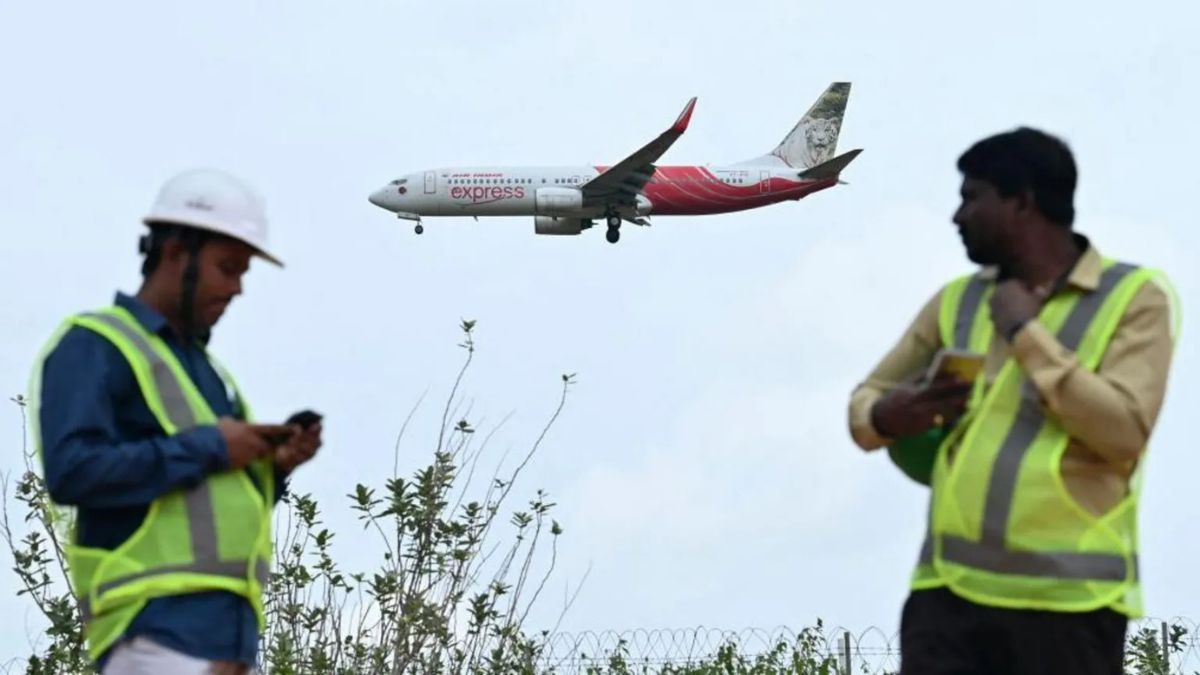
A dramatic and unprecedented surge in hoax bomb threats targeting Indian airlines is wreaking havoc on flight schedules, diverting planes and causing widespread disruptions.
A video posted on social media last week showed passengers draped in woollens, walking down the icy ladder of an Air India plane into the frigid air of Iqaluit, a remote city in Canada.
The 211 passengers on the Boeing 777, originally en route from Mumbai to Chicago, had been diverted early on 15 October due to a bomb threat.
“We have been stuck at the airport since 5am with 200 passengers… We have no idea what’s happening or what we are supposed to do next… We are completely stranded,” Harit Sachdeva, a passenger, posted on social media. He praised the “kind airport staff” and alleged Air India was not doing enough to inform the passengers.
Mr Sachdeva’s post captured the frustration and anxiety of passengers diverted to an unknown, remote destination. Hours later, a Canadian Air Force plane ended their ordeal by ferrying the stranded passengers to Chicago. Air India confirmed that the flight had been diverted to Iqaluit due to a “security threat posted online”.
The threat was false, mirroring scores of similar hoaxes targeting India’s airlines so far this year. Last week alone, there were at least 90 threats, resulting in diversions, cancellations and delays. In June, 41 airports received hoax bomb threats via email in a single day, prompting heightened security.
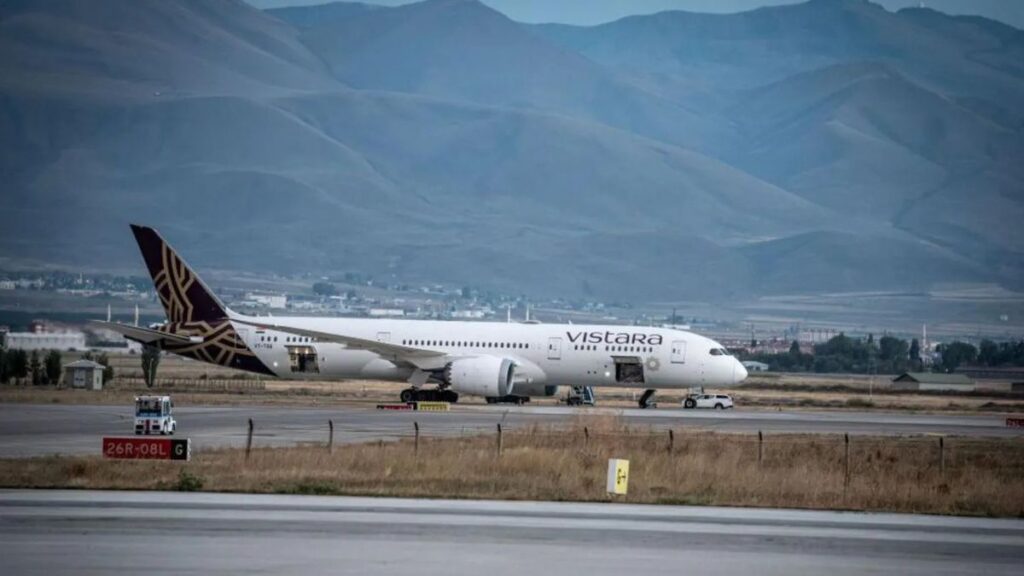
A Frankfurt-bound Vistara plane was diverted to Turkey after a bomb threat in September
For context, between 2014 and 2017, authorities recorded 120 bomb hoax alerts at airports, with nearly half directed at Delhi and Mumbai, the country’s largest airports. This underscores the recurring nature of such threats in recent years, but this year’s surge has been sensational.
“I am deeply concerned over the recent disruptive acts targeting Indian airlines, affecting domestic and international operations. Such mischievous and unlawful actions are a matter of grave concern. I condemn attempts to compromise safety, security and operational integrity of our aviation sector,” federal aviation minister, Kinjarapu Ram Mohan Naidu, said.
So what is going on?
Hoax bomb threats targeting airlines are often linked to malicious intent, attention-seeking, mental health issues, disruption of business operations or a prank, experts say. In 2018, a rash of jokes about bombs by airplane passengers in Indonesia led to flight disruptions. Even fliers have proved to be culprits: last year, a frustrated passenger tried to delay a SpiceJet flight by calling in a bomb hoax alert after missing his check-in at an airport in India’s Bihar.
These hoaxes end up wreaking havoc in one of the world’s fastest-growing aviation markets. More than 150 million passengers flew domestically in India last year, according to the civil aviation ministry. More than 3,000 flights arrive and depart every day in the country from more than 150 operational airports, including 33 international airports.
Last week’s hoaxes peaked even as India’s airlines carried a record 484,263 passengers on a single day, 14 October. India has just under 700 commercial passenger planes in service, and an order backlog of more than 1,700 planes, according to Rob Morris of Cirium, a consultancy. “All this would certainly render India the fastest growing commercial aircraft market today,” says Mr Morris.

Bomb threats to airlines inconvenience passengers, as seen with these travellers boarding another Vistara flight from Turkey
Consider the consequences of a bomb threat alert on an airline.
If the plane is in the air, it must divert to the nearest airport – like the Air India flight that diverted last week to Canada or a Frankfurt-bound Vistara flight from Mumbai that diverted to Turkey in September. Some involve fighter jets to be scrambled to escort planes reporting threats like it happened with a Heathrow-bound Air India flight over Norfolk and a Singapore-bound Air India Express last week.
Once on the ground, passengers disembark, and all baggage and cargo and catering undergo thorough searches. This process can take several hours, and often the same crew cannot continue flying due to duty hour limitations. As a result, a replacement crew must be arranged, further prolonging the delay.
“All of this has significant cost and network implications. Every diverted or delayed flight incurs substantial expenses, as grounded aircraft become money-losing assets. Delays lead to cancellations, and schedules are thrown off balance.” says Sidharath Kapur, an independent aviation expert.
The dramatic rise in bomb threats on social media from anonymous accounts has complicated efforts to identify perpetrators. The motives remain unclear, as does whether the threats come from a single individual, a group, or are simply copycat acts.
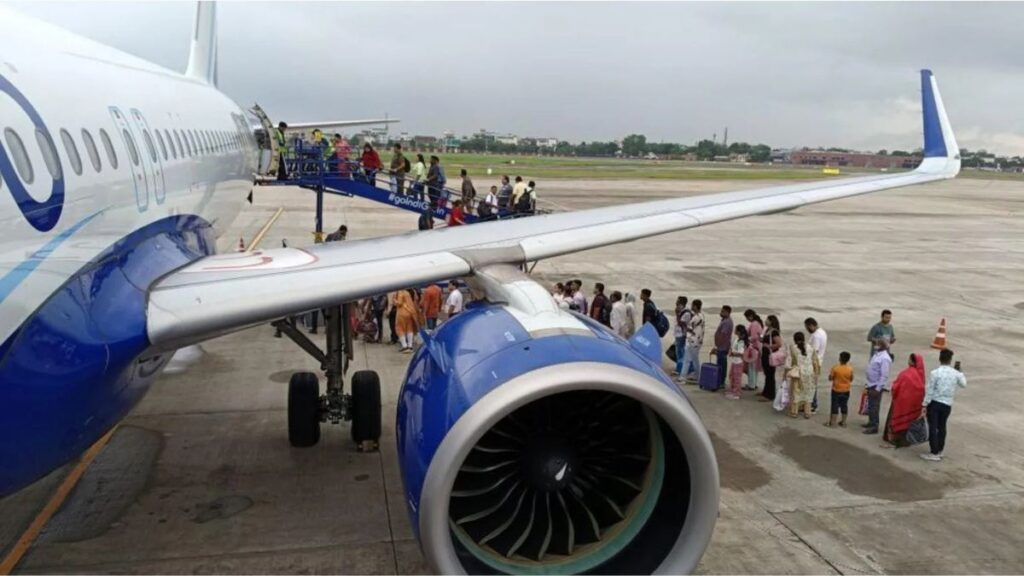
More than 150 million passengers flew domestically in India last year
Last week, Indian authorities arrested a 17-year-old school dropout for creating a social media account to issue such threats. His motivations remain unclear, but he is believed to have targeted four flights – three international – resulting in two delays, one diversion and one cancellation. Investigators suspect that some posts may have originated from London and Germany after tracing IP addresses.
Clearly, tracking down hoaxers presents a significant challenge. While Indian law mandates life imprisonment for threats to airport safety or service disruption, this punishment is too severe for hoax calls and would likely not withstand legal scrutiny. Reports suggest the government is considering placing offenders on a no-fly list and introducing new laws that could impose a five-year prison term.
Ultimately, such hoax threats can cause serious anxiety for passengers. “My aunt called to ask if she should take her booked flight given these threats. ‘Should I take a train?’ she asked. I told her, ‘Please continue to fly’,” says an aviation consultant, who preferred to remain unnamed. The threats continue to disrupt lives and sow fear.
– Soutik Biswas
(BBC News)
You may like
-


Mount Etna erupts as large plumes rise from volcano
-


All necessary procedures to launch Starlink services in SL competed – Dy. Minister
-


2 more arrested over shooting Halloluwa’s vehicle
-


MoH issues update on Covid-19 situation
-


Dates & venues confirmed for ICC Women’s Cricket World Cup
-


Anudi returns to SL
FEATURES
NONE worried about massacre of the UN “Founding Charter”
Published
10 hours agoon
June 2, 2025By
editor
UN Founding Conference 1945 April 25 to June 26 – Courtesy UN Photos
Here is the opening pledge of the UN Charter on which the United Nations was officially declared established in October 1945 after WW II was brought to an end.
“We the People’s of the United Nations determined to save succeeding generations from the scourge of war, which twice in our lifetime has brought untold sorrow to mankind, and
to reaffirm faith in fundamental human rights, in the dignity and worth of the human person, in the equal rights of men and women and of nations large and small, and
to establish conditions under which justice and respect for the obligations arising from treaties and other sources of international law can be maintained, and to promote social progress and better standards of life in larger freedom…..”
This is the pledge the post WW II generations were given by all 193 member nations and they are all morally and internationally responsible to uphold it. Yet 05 years after the WW II and 05 years after the UN was formally announced, and when the world was less complex, the Korean war exploded in 1950 resulting in breaking up the country into North and South Koreas. When an end to the war was finally reached in 1953, Vietnam war was in the making.
How many member nations now stand firm against “the scourge of war” at least after the 20 year Vietnam war? Vietnam war left over 03 million casualties in a wholly devastated country at the end of the war in 1975, including 58,000 US soldiers dead and missing. (https://es.highpointnc.gov/2113/Vietnam-War#:~:text=More 20than%203%20million%20people,of%20U.S.%20forces%20in%201973)
After the Vietnam war, this is what global peace now means to the world citizenry.
The 20 year Afghan war with Soviet Russia (Russia after 1991) and the US both militarily involved, left 176,000 dead by 2021.
In Iraq, since the US invasion in 2003, the peer reviewed medical journal PLOS gives a figure of 460,000 deaths by June 2011.
Syrian war deaths given by the United Nations Human Rights Office (OHCHR) count “at least 306,887 civilians” by June 2022.

Syria the world’s largest refugee crisis since 2011, more than 14 million Syrians have been forced to flee their homes in search of safety. More than 7.4 million Syrians remain internally displaced, according to UNHCR (March 2025)
Russo-Ukrainian War include 14,200–14,400 military and civilian deaths during War in Donbas, and up to 1,000,000 estimated casualties during the Russian invasion of Ukraine till mid-September 2024. (Wall street journal)
Counted as the most brutal military onslaught let loose on human society post-WW II, the Israeli invasion of Gaza :-
Nearly 56,000 people (54,271 Palestinians and 1,706 Israelis) have been reported killed as of May 27, 2025 according to Gaza Health Ministry, as well as 180 journalists and media workers, 120 academics, and over 224 humanitarian aid workers, a number that includes 179 employees of UNRWA (UN Relief and Works Agency). OHCRH calculated 70% includes women and children.
All countries including the USA, UK, Germany, France, Canada, India, Italy, Serbia, Netherlands that supplied arms and ammunition to Israel especially after October 2023 are responsible for all fatalities and chaos in Gaza.
“Geneva Academy of International Humanitarian Law and HR” say they are monitoring armed conflicts In Mid-East and North Africa including in Cyprus, Egypt, Iraq, Israel, Libya, Morocco, Palestine, Syria, Turkey, Yemen and Western Sahara.
In Africa, they monitor armed conflicts in Burkina Faso where over 01 million is reported displaced, Cameroon, Central African Republic, DR of Congo, Ethiopia, Mali, Mozambique, Nigeria, Senegal, Somalia, South Sudan and Sudan.
In Asia it’s India, Pakistan, China, Myanmar, and Philippines.

Latin America has Mexico and Colombia.
Europe has Russo-Ukraine war, and Armenia.
Many more millions would add to the numbers above as casualties from armed conflicts in the continents mentioned therein.
What has the UN member nations being doing all these decades about the pledge they gave the post WW II new generations on world peace? For reaffirming faith in fundamental human rights, in the dignity and worth of the human person, in the equal rights of men and women and of nations large and small?
World citizenry, collectively and individually has to accept their irresponsibility in ignoring the UN Charter for a world without armed conflicts. They have not held their own nation States, their own political leaders responsible for world peace, for a world without armed conflicts as signatories to the UN Charter, all these decades in post WW II world.
They have not questioned the right of their nation State to continue accepting leading arms and weapons dealers and manufacturers as “permanent members of the Security Council” that’s mandated to establish world peace.
With 06 ongoing wars each accounting for over 10,000 deaths annually and 16 other armed conflicts with less casualties and refugees, World citizenry now has to demand dissolving of the present Security Council and to establish a “Committee for Disarmament and Peace” with member nations who are not in arms and weapons manufacture and trade. Today it’s about global disarmament for global peace. Rotated between countries within continents every 03 years, the Committee could have 07 permanent members representing the 06 continents with Asia given 02 to represent over 60% of the world population.
It would mean none of the top 50 arms exporting countries including India, South Korea, Japan, Sweden, Luxembourg, Poland, Turkey, Switzerland, Brazil, Morocco, and the present permanent members in the Security Council could sit in the proposed Committee for Disarmament and Peace.
Serious attention on global disarmament for peace is now necessary due to extension of armed conflicts lending to the concept of “National Security” that promotes arms, weapons and military equipment markets. National Security is essentially an ideological extension of “a would be war”, the market creator for weapons and military equipments through strengthening of national armed forces and intelligence agencies kept ready for war there isn’t. Ideologically groomed to have a constant ear for armed conflicts, and provoked to strengthen the State that ends up as repressive and anti democratic.
Thus arms trade, war and armed conflict is not a topic restricted to war torn countries alone and their immediate neighbors. It is a major topic for all UN members, who have pledged for world peace on the UN Charter. Global peace is about total disarmament across the globe and a world citizenry that insists on honoring the UN Charter.

– Kusal Perera
2025 June 01
FEATURES
Inside the fascinating world of India’s blind cave-dwelling fish
Published
3 days agoon
May 30, 2025By
editor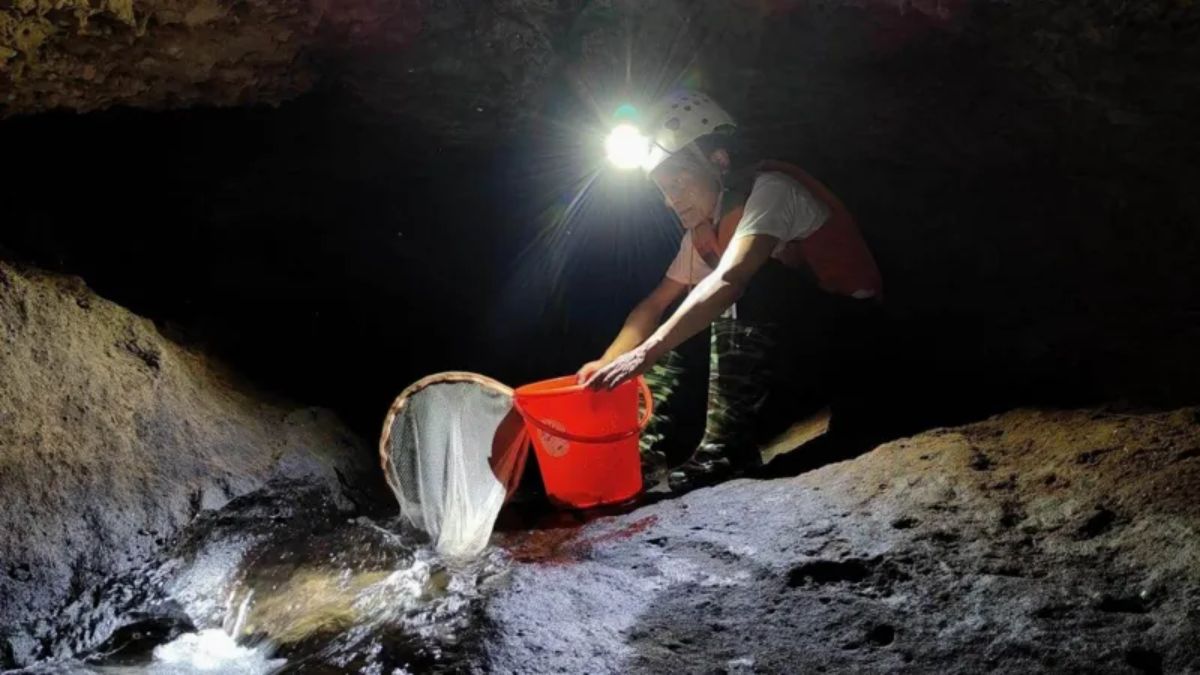
Khlur Baiaineh Mukhim removes a Schistura densiclava specimen from a stream inside Krem Mawjymbuin cave
Two years ago, zoologist Khlur Baiaineh Mukhim spotted something intriguing in a stream in a remote underground cave in India’s north-eastern Meghalaya state.
It was a fish he had never seen before, with long barbels – the whisker-like protrusion around a fish’s mouth – yellowish-green in colour and, most importantly, with eyes.
Cave-dwelling fish, or species of fish that live exclusively in caves, usually don’t have eyes, as they have adapted to living in darkness, which is why the fish Mr Mukhim spotted stood out to him.
Researchers in Meghalaya now say it is a brand new species of fish, one that has adapted to living above as well as under the ground – a unique characteristic among cave-dwelling species.
Their findings were published earlier this month in the latest issue of the Journal of Fish Biology, a leading peer-reviewed publication on fish research.

A Schistura densiclava found in the Krem Mawjymbuin cave
The researchers have named the fish Schistura ‘densiclava’ after the thick black stripe on its tail.
They say that the species is endemic to the cave it was discovered in – Krem Mawjymbuin – in the eastern Khasi Hills, and has been found to exist in both water pools 60m (196ft) deep inside the cave, as well as a nearby stream above ground.
Dandadhar Sarma, a professor of zoology and one of the researchers of the study, says that the environment inside the cave is harsh, where temperatures drop to 18C (64.4F) – the ideal temperature for tropical fish to survive is much higher – and oxygen levels are extremely low.
“So it’s remarkable that the fish can adapt to both – harsh subterranean conditions as well as more favourable surface conditions,” Mr Sarma says.
Schistura densiclava is the sixth cave-dwelling species of fish that has been discovered in Meghalaya over the past two to three decades, but the only one which has been found to show this ability to adapt to two very different kinds of environments.
The state is known to have some of the most complex cave systems in the world but many of its estimated 1,500 to 1,700 limestone and sandstone caves remain unexplored, as they are located in remote, forested regions that are challenging to access.
These cave networks are home to numerous animal species that display fascinating evolutionary characteristics but they remain largely unknown because of insufficient research, Mr Sarma says.
Over the past five years, a team of researchers from the state, funded by the federal government, have been systematically exploring Meghalaya’s vast network of caves to locate and document new species of fish living inside them.
In 2019, the research team discovered Neolissochilus pnar, the largest cave-dwelling fish species in the world, Mr Sarma says.
The fish was found inside the Krem Umladaw cave in the western Jaintia Hills in a deep pond hundreds of metres below the ground.

The entrance of the Krem Umladaw cave
Mr Mukhim, who is part of the team and has undertaken dozens of cave expeditions, says that cave-dwelling fish display evolutionary traits that are as fascinating as the those displayed by animals living at the Earth’s poles or deep inside its oceans.
“Cave ecosystems are one of the harshest environments to live in,” he says.
“These fish usually live in perpetual darkness, stagnant, shallow water pools with dangerously low oxygen levels and sometimes, go for months with little to no food.”
Nature has helped them survive by doing away with the unwanted and strengthening what’s necessary for survival.
Consequently, they’ve lost their eyesight and ability to produce colourful pigments, which would otherwise be a needless waste of energy inside a pitch-dark cave.
Instead, they have a sharper sense of taste and smell, and sensory organs on their skin help them detect vibrations to navigate the substrate and avoid predators.
Their sources of food include only what’s available inside the cave, like leaf debris and marine organisms flushed in by seasonal floods, and even bat excreta.
And within this extremely harsh environment, these cave-dwelling fish species live out their lives, some living up to a decade, and even produce offspring.
Remarkably, their offspring are born with eyesight – a feature that links them to the surface-dwelling ancestors from which they’ve evolved – and gradually, they lose their eyesight as they age.

Neolissochilus pnar, the largest cave-dwelling fish species in the world
But searching for these fish is no easy task.
It involves rappelling down hundreds of meters into cavernous holes in the earth, squeezing through tiny tunnels with little oxygen and wading through pools filled with creatures yet unknown in pitch darkness.
“Our headlights are the only source of light,” Mr Mukhim says.
Catching fish involves squatting near pools for hours, and swiftly sweeping up the skittish creatures in a net as they present themselves.
Mr Mukhim, who has been studying fish found in the caves of Meghalaya for over a decade, says that there’s a need to study these species as that is the only way we will be able to conserve them.
“Once a species is wiped out, you can never bring them back,” Mr Mukhim says.
“It’s painful to think that an entire ecosystem in our midst, one of the most fascinating ones, has been studied so little,” he adds.
“It’s time we paid a little more attention to these cave-dwelling marvels of nature.”
– Cherylann Mollan
(BBC News, Mumbai)
FEATURES
Why the mighty Himalayas are getting harder and harder to see
Published
3 weeks agoon
May 14, 2025By
editor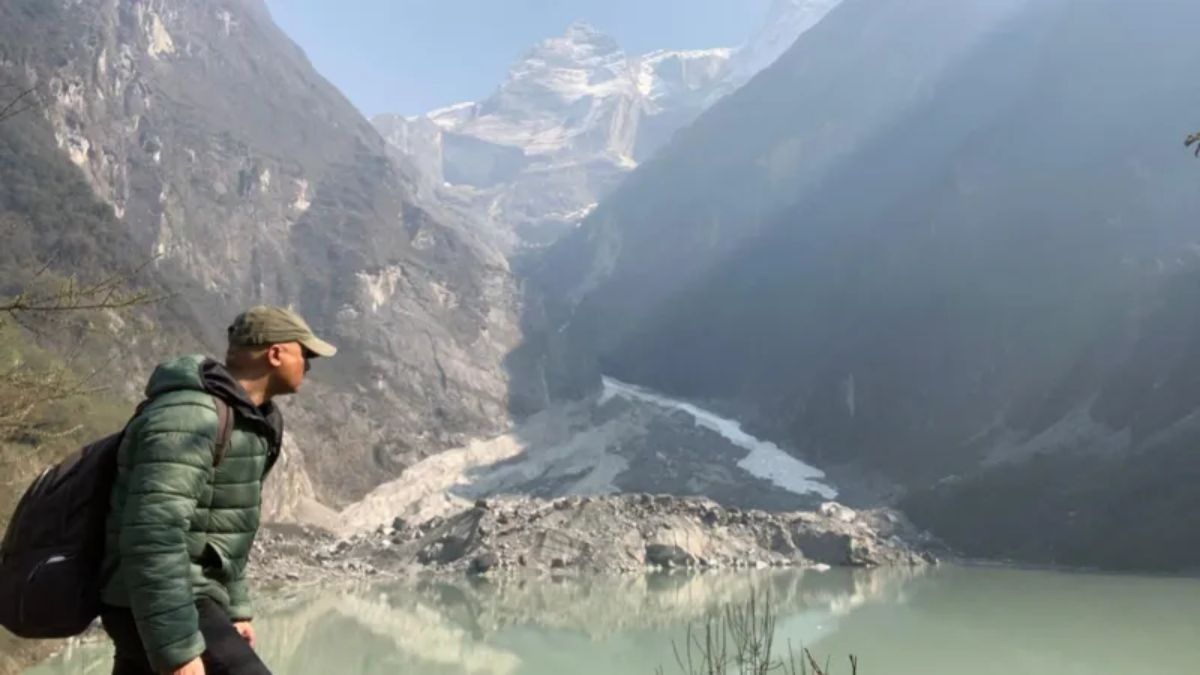
Trekking in Nepal’s Annapurna region, where haze obscures visibility of the epic mountains even at close range
I grew up in Nepal’s capital watching the Himalayas. Ever since I left, I’ve missed sweeping, panoramic views of some of the highest mountain peaks on Earth.
Each time I visit Kathmandu, I hope to catch a glimpse of the dramatic mountain range. But these days, there’s usually no luck.
The main culprit is severe air pollution that hangs as haze above the region.
And it’s happening even during the spring and autumn months, which once offered clear skies.
Just last April, the international flight I was in had to circle in the sky nearly 20 times before landing in Kathmandu, because of the hazy weather impacting visibility at the airport.
The hotel I checked in at was at a reasonable height from which mountains are visible on a clear day – but there was no such day during my two-week stay.
Even from the major vantage point of Nagarkot, just outside Kathmandu, all that could be seen was haze, as if the mountains did not exist.
“I no longer brand the place for views of ‘sunrise, sunset and Himalayas’ as I did in the past,” said Yogendra Shakya, who has been operating a hotel at Nagarkot since 1996.
“Since you can’t have those things mostly now because of the haze, I have rebranded it with history and culture as there are those tourism products as well here.”
During an earlier trip a year ago, I was hopeful I would be able to see the mighty Himalayan peaks on a trek in the mesmerising Annapurna region – but had hardly any luck there either.

View of the Himalayas on an increasingly rare clear day from the Nagarkot vantage point

The hazy view from the same vantage point during my most recent visit
Scientists say hazy conditions in the region are becoming increasingly intense and lasting longer, reducing visibility significantly.
Haze is formed by a combination of pollutants like dust and smoke particles from fires, reducing visibility to less than 5,000m (16,400ft). It remains stagnant in the sky during the dry season – which now lasts longer due to climate change.
June to September is the region’s rainy season, when Monsoon clouds rather than haze keep the mountains covered and visibility low.
Traditionally, March to May and October to November were the best times for business because that was when skies remained clear and visibility was best.
But with rising temperatures and a lack of rain, and worsening air pollution, the spring months are now seeing thick haze with low visibility. Those conditions are beginning as early as December.
‘No sighting means no business’
Lucky Chhetri, a pioneering female trekking guide in Nepal, said hazy conditions had led to a 40% decrease in business.
“In one case last year, we had to compensate a group of trekkers as our guides could not show them the Himalayas due to the hazy conditions,” she added
An Australian tourist who has visited Nepal more than a dozen times since 1986 described not seeing the mountains as a “major let-down”.
“It wasn’t like this 10 years ago but now the haze seems to have taken over and it is extraordinarily disappointing for visitors like me,” said John Carrol.
Krishna Acharya, the provincial chair of the Trekking Agents Association of Nepal in the western Gandaki province, says the trekking industry is in deep trouble.
“Our member trekking operators are getting depressed because no sighting of the Himalayas means no business. Many of them are even considering changing professions,” he told the BBC.

Trekking guide Lucky Chhetri says business is down because of the hazy condition
On the Indian side, near the central Himalayas, hoteliers and tour operators say haze is now denser and returns quicker than before.
“We have long dry spells and then a heavy downpour, unlike in the past. So with infrequent rain the haze persists for much longer,” said Malika Virdi, who heads a community-run tourism business in the state of Uttarakhand.
However, Ms Virdi says tourists are persistent – with many who didn’t catch the mountain range returning to try their luck again.
The western Himalayas in Pakistan have been relatively less affected by the haze because the mountains are relatively far from cities.
But locals say that even the ranges that were once easily visible from places like Peshawar and Gilgit are often no longer seen.
“The sheet of haze remains hanging for a longer period and we don’t see the mountains that we could in the past,” said Asif Shuja, the former head of Pakistan’s environmental protection agency.
Hazes and dust storms increasing
South Asian cities regularly top lists of places with highest levels of air pollution in the world.
Public health across the region has been badly impacted by the toxic air, which frequently causes travel disruption and school closures.
Vehicular and industrial emissions, dust from infrastructure construction and dry gravel roads as well as the open burning of waste are major sources of air pollution year-round.
This is compounded by soot from massive forest fires – which are increasing due to a longer dry season – and the burning of crop residues after the harvest by farmers in northern India, Pakistan and Nepal.
Weather conditions keeping warmer air above cooler air trap these pollutants and limit vertical air movement – preventing pollution from dispersing.
“Hazes and dust storms are increasing in South Asia, and this trend is projected to continue due to climate change and other factors,” Dr Someshwor Das from the South Asia Meteorological Association told the BBC.
In 2024, the number of hazy days recorded at the airport in Pokhara, a major tourism hub in western Nepal, was 168 – up from 23 in 2020 and 84 in 2021, according to Nepal’s department of hydrology and meteorology.

The Fishtail mountain in Nepal on a clear day

The same mountain range covered in haze, taken from roughly the same location
Experts believe the Himalayas are probably the worst affected mountain range in the world given their location in a populous and polluted region.
This could mean the scintillating view of the Himalayas could now largely be limited to photographs, paintings and postcards.
“We are left to do business with guilt when we are unable to show our clients the mountains that they pay us for,” said trekking leader Ms Chhetri.
“And there is nothing we can do about the haze.”
– Navin Singh Khadka
(Environment correspondent, BBC World Service)

Mount Etna erupts as large plumes rise from volcano

All necessary procedures to launch Starlink services in SL competed – Dy. Minister















